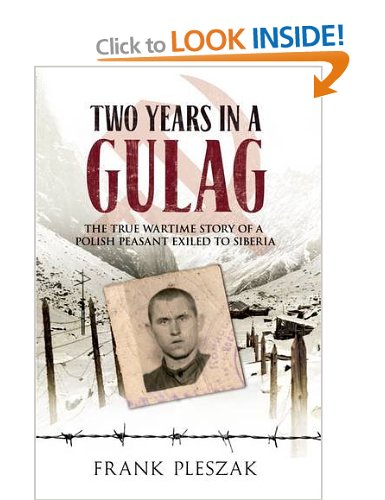Clara Barton was a pioneer of the nineteenth century. But who was this amazing lady? Well, she played a key role to wounded soldiers in the US Civil War and was instrumental in the formation of the American Red Cross. C.A. Newberry explains.
Clara Barton, circa 1897. By Charles E. Smith.
Where would we be without the Red Cross today? Since the International establishment of the organization in 1864 it has been a consistent lifeline for people in need. Vital in aiding during disaster relief efforts, supporting military families, and providing essential health and safety training. Yet, how did this incredible organization begin?
Born on Christmas Day in the year 1821 in the town of Oxford, Massachusetts, Clara Harlowe Barton was the youngest of five children. As a young girl Clara was painfully shy. Nonetheless, her passion to serve others and help people started at an early age. When her brother David suffered an accident, she stayed home from school to tend to his needs, administering medications and even learning the art of “leeching” after the family doctor suggested it may help.
During her teenage years she was encouraged to pursue a career in teaching, potentially helping her to overcome her shyness. Years later she opened a free public school in New Jersey where anyone rich or poor could attend. During the mid 1850s, after a successful career, Clara made the move to Washington, D.C. It was here that she worked in the US Patent Office, granting permits for inventions.
Civil War
However, it was the US Civil War that proved to be a defining period of Clara’s life. When war broke out in 1861, Clara, sensing an immediate need, swiftly volunteered. She tended to wounded soldiers and then began to bring supplies to the troops and the medical teams who were exhausted and over-worked. At one point supplies were so scarce that they were trying to make bandages out of corn husks.
Clara did her best to organize supplies but also to gather volunteers. She led the training to prepare them so they could perform first-aid, carry water, and prepare food for the wounded. Barton continued with her quest to deliver supplies, utilizing some help funded through the army quartermaster in Washington, D.C., but many were purchased with donations that Clara was able to secure. However, if those choices were unavailable she would use her own funds, most of which were later refunded to her through Congress. Through all of this tireless and selfless volunteering, she earned the nickname, “The Angel of the Battlefield”.
After years of serving through the war, she followed up by embarking on a brutal travel schedule where she spoke to countless groups recalling her time in the field. Soon Clara became ill and was encouraged by her doctors to travel to Europe. The hope was that she would have a certain amount of anonymity while there, allowing her to rest and recuperate.
Meanwhile, in Europe, Henry Dunant, founder and creator of the global Red Cross network, had the idea that there should be international agreements to protect the sick and wounded during wartime. There should also be the formation of national societies to give aid voluntarily, but on a neutral basis. The first treaty to encompass Dunant’s ideas was negotiated in Geneva during 1864. It was then ratified by twelve different European nations. This treaty is known by several titles, including the Geneva Treaty, the Red Cross Treaty, and the Geneva Convention.
During her lecture tour and the vivid recreations of her war experiences, Barton had become incredibly well known, and was brought to the attention of Dunant. And during 1869, while in Geneva, Clara met both Dunant and another supporter Dr. Louis Appia. Being familiar with Clara’s work in the states they wanted to share the vision of the International Red Cross, hoping to gain Clara’s support and further encouraging her to get the United States on board.
Bring the Red Cross to the US
During Clara’s stay in Europe the Franco-Prussian War started. She was asked to serve with the International Red Cross providing assistance and, after seeing the benefits, Clara was determined to return to the United States and establish the Red Cross at home. When Clara first approached President Rutherford B. Hayes in 1877 she was met with resistance, as he feared a possible “entangling alliance” with the other European nations. However, his successor, President James Garfield, saw the value in the program and was supportive. Sadly, before it could become official, President Garfield was assassinated.
Frustrated, Clara, with the help of friends and neighbors in New York, funded and established the first local society of the American Red Cross in 1881. Just a short month later they had their first call to action. Responding to a disastrous forest fire in Michigan, they collected $300 for the victims.
Clara continued to seek government support and, after years of passionate pleas, the Geneva Treaty (the International Red Cross) was signed in the US in 1882. Within a few days the Senate was able to ratify it. Not surprisingly, Clara Barton was named president.
While the mission of the International and now American Red Cross were important, Clara truly believed that the assistance needed to be expanded beyond wartime needs. She was also passionate about helping with disaster relief, peacetime emergencies and directing charitable support. So during its first twenty years the American Red Cross was largely devoted to disaster relief. Even though Henry Dunant had originally suggested that the Red Cross provide disaster relief, it hadn’t been widely embraced until Clara Barton advocated it. In fact, during the Third International Red Cross conference in 1884, the American Red Cross suggested an amendment to the original Geneva Treaty, asking for an expansion to include relief for victims of natural disasters. The resolution was passed and became known as the “American Amendment” to the Geneva Treaty of 1864.
Clara Barton served as president until 1904. After her retirement she continued with her philanthropy until she passed away in 1912, at the age of 91. She will be forever remembered as a pioneer, passionate about the Red Cross and one of the most celebrated figures of her time.
Did you enjoy this article? If so, tell the world! Tweet about it, like it, or share it by clicking on one of the buttons below…
References
- History’s Favorite Nurses, Maryville University, February 9 2015
- Founder, Clara Barton, The Red Cross, February 9 2015
- Clara Barton, The Civil War Trust, February 9 2015













